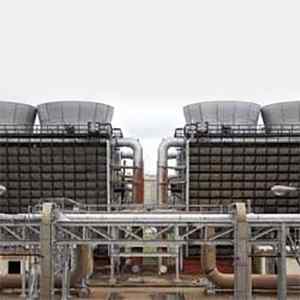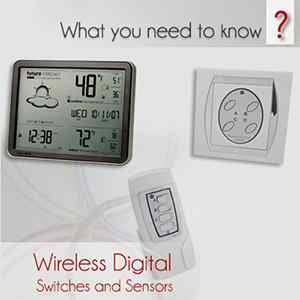Articles
Types of 3D printers And Their Individual Buying Guide

One of the most affordable and agile option for manufacturing small to medium sized quantity of certain metal products and plastic is 3D printing or additive manufacturing. Unlike machining (which removes material from a solid block) or injection molding (which shapes products using molds), the additive manufacturing creates products layer by layer. As 3D printing is being used in almost all industries you could think of, it encompasses many forms of technologies and materials. 3D printing can be seen in different applications. A few examples include - dental products, eyewear, movie props, prosthetics, architectural scale models & maquettes etc. There are many different models and technologies of printers and each one has its own advantages. Depending on your yield and throughput, several systems could work well for you.
Choosing the right 3D printer
Before we look into the different kinds of printers and materials available, there are a few main factors to consider when determining which 3D printer is best suitable for your project. The first and vital is the purpose of the project - whether it's for a consumer product, functional prototype, industrial part, or aesthetic model? The next consideration is if there are any specific material requirements for the project like heat, chemical or corrosion resistance, and biocompatibility. And lastly, businesses should think about how many units they want to order and how large every piece is. These considerations would likely be the most significant economic factor for any project.
Types of 3D Printers
We shall outline the 7 main types of printing processes before going into some of the common printers in detail.
- Binder Jetting printers
- Powder Bed Fusion
- Material Extrusion
- VAT Polymerization
- Material Jetting
- Sheet Lamination
- Directed Energy Deposition
Plastic 3D Printers
- Multi Jet Fusion (MJF)
- Fused Deposition Modeling (FDM)
- Selective Laser Sintering (SLS)
- Stereolithography (SLA)
Metal 3D Printers
- Direct Metal Laser Sintering (DMLS)
- Selective Laser Melting (SLM)
- Electron Beam Melting (EBM)
Buying Guide For Plastic 3D Printers
A) Multi Jet Fusion (MJF)
This is a new industrial 3D printing technology. It’s a faster, more cost-effective process for 3D printed parts. It's ideal for applications like connectors, brackets, covers, wiring clips, and complex thin-wall ductwork. How MJF is different?
- Finer minimum feature resolution
- Requires black dye for consistent color
- New process with accelerated build time
- Improved surface roughness
A few of the design elements to consider before buying are:
- A fine feature resolution of 0.02 in. Anything smaller would print, but it may not be fully dense or meet specific material properties.
- Materials - The material used in MJF are thermoplastic polymers (usually Nylon) that come in a granular form. The MJF parts have superior strength and flexibility and more homogeneous mechanical properties when printing in this material.
- Color - Due to the black fusing agent, most MJF parts are built in a shade of black or grey. However, the parts can be painted or texturized with color.
- Surface finish - The average surface finish of parts is 125 to 250 micro inches RA. The surfaces can be tumbled or hand-sanded for a smoother finish.
- Part Size - The build envelope for the MJF machine is 16 in. x 12 in. x 16 in. The maximum part size 14.96 in. x 11.25 in. x 14.96 in. can be considered to add a buffer around parts for the printing agents.
- Wall thickness - The nylon materials, like any thermoplastic, shrink as they solidify. With an accumulation of material, very thick walls can build up heat and cause spot shrinkage in dense areas, resulting in geometric deformations. Hence, the walls should be at least 0.02 in. to 0.12 in. (0.5 to 3.0 mm). And due to non-uniform in-process shrinkage, the thinner walls can be inaccurate and deform. Adding ribs or fillets to reinforce the part can be one way to deal with the need for thin walls.
- Tolerances - The typical tolerances for MJF are ± 0.010 in. (0.25 mm) or ± 0.001 in./in. (0.025 mm/25.4 mm).
B) Fused Deposition Modeling (FDM)
This is the second most major commercial layered printing technique. The final products can be fabricated directly without the use of any tooling, molds, or die. Due to its short cycle time, high dimensional accuracy, ease of use, and easy integration with different computer-aided design (CAD) software, this technique has gained popularity. This is an additive manufacturing technology commonly used for prototyping, modeling, and batch production applications. The biggest advantage of FDM 3D printing is scalability and material flexibility.
- Material - A common thermoplastic acrylonitrile butadiene styrene (ABS) is the most common printing material that's used to make many consumer products, from LEGO bricks to whitewater canoes. A few of the other FDM machines also print in other thermoplastics like polycarbonate (PC) or polyetherimide (PEI), along with ABS. Generally, water-soluble wax or brittle thermoplastics, like polyphenylsulfone (PPSF) are the support materials in FDM.
- Filament roll size - Available in two standardized sizes (diameter: 1.75 or 2.85mm), most FDM printers can use standard filament rolls. Very few printers utilize filament boxes or proprietary filaments. But, these are usually more expensive than standard rolls and deliver better quality.
- Build Size - Generally, the available build size of a desktop 3D printer is 200 X 200 X 200mm, whereas for industrial machines this can be as big as 1000 x 1000 x 1000 mm.
- Layer Height - In FDM, the layer height varies between 50 and 400 microns and can be determined upon placing an order. Smoother parts can be produced with smaller layer height and captures curved geometries more precisely, while a larger layer height produces parts faster and a low cost. Usually, a layer height of 200 microns is used.
- Layer Adhesion - A good adhesion between the deposited layers is very important for an FDM part. The molten thermoplastic is pressed against the previous layer when it is extruded through the nozzle. The surface of the previous layer is re-melted by the high temperature and pressure and enables the bonding of the new layer with the previously printed part.
- Warping - One of the common defects in FDM. This can be prevented by closer monitoring of the temperature of the FDM system and by increasing the adhesion between the part and build platform.
C) Selective Laser Sintering (SLS)
It’s a powder-and laser-based additive manufacturing process. Many types of materials such as polymer, ceramic, metal, and composite can be processed and can make complex parts. Automotive, tooling, aerospace, architecture, and biomedical are a few of the applications where SLS is used.
- Material - Nylon, a popular engineering thermoplastic known for its strong, lightweight, and flexible properties is the most common material for SLS. As nylon is stable against chemicals, UV light, impact, water and dirt it is thus ideal for both rapid prototyping and production. Its two versions - Nylon 11 and 12, or PA 11 and PA 12 are commonly used for SLS.
- Layer Thickness - The minimum layer thickness for a SLS printer is 0.040 in.
- Minimum wall thickness - To ensure a successful 3D print, the minimum wall thickness varies between 0.7 mm (for PA12) up to 2.0 mm (for carbon filled polyamide).
- Hole Size - All holes should be larger than 1.5 mm in diameter.
- Escape Holes - The SLS parts are printed hollow to save weight and at times costs too. These escape holes, which must be a minimum of 3.5 mm in diameter, must be included to remove unsintered powder after production.
- Feature Size - Generally, a minimum feature size of 0.8 mm is recommended.
- Embossed and engraved details - A minimum depth of engraving 1 mm and a minimum height of embossing 1 mm is needed to ensure small details are visible.
D) Stereolithography (SLA)
This is one of the most popular and widespread techniques in the world of additive manufacturing. To create the desired 3D shape, a high-powered laser is used to harden liquid resin that is contained in a reservoir. SLA belongs to the resin 3D printing category.
- Layer Height - In SLA, the typical layer height ranges between 25 and 100 microns. With lower layer heights, the curved geometries are captured more accurately. But, increase the build time and cost and the profitability of a failed print. For most common applications, a layer height of 100 microns is suitable.
- Build Size - The build size depends on the type of SLA machine.
- Support Structure - This is always required in SLA. These are printed in the same material as the part and must be removed manually after printing.
- Curling - This is one of the biggest problems relating to the accuracy of parts produced through SLA. It's similar to warping in FDM.
- Layer Adhesion - The SLA printed parts have isotropic mechanical properties, as a single UV laser pass is insufficient to fully cure the liquid resin. Later, the lasers passes help previously solidified layers to fuse together to a very high degree.
Buying Guide For Metal 3D Printers
A) Direct Metal Laser Sintering (DMLS)
An additive manufacturing technology which builds high quality complex metal parts from 3D CAD data. It's also commonly known as Direct Metal Printing (DMP).
- Maximum build size - The maximum build size for any DMLS printer is 250 x 325 x 250 mm (9.84'' x 12.80'' x 9.84'').
- Tolerances - Typically, tolerances of +/-.005” plus .002” per inch is ideal for DMLS. However, the tolerance expectations can vary across different materials (e.g. stainless versus aluminum)
- Support structures - The DMLS parts need support structures for reducing or eliminating warping, anchoring the part to the build plate, and supporting overhanging geometry. The horizontal holes with a diameter greater than 10mm require support structures.
- Wall thickness - To ensure a successful 3D print with most materials, the minimum wall thickness is 0.4mm. The finer structures are possible, but are dependent on orientation, material, and printer parameters.
- Pin diameter - The smallest reliable pin diameter is 1mm. However, smaller diameters are even possible, but will have reduced contour sharpness.
- Hole size - The holes diameter between 0.5mm and 6mm can be printed reliably without supports.
B) Selective Laser Melting (SLM)
SLM, also known as Direct Metal Laser Melting (DMLM) or laser powder bed fusion is a 3D printing, rapid prototyping, or additive manufacturing technique. It's designed to use a high power-density laser to melt and fuse metallic powders together. Aerospace industry is the most common application for this technology. That's because complex parts can be made with additive manufacturing, which reduces the limitations of conventional manufacturing. Apart from this, SLM is also used in applications in the medical field where some prosthetics are created with this technology.
- Standard Lead Time - Minimum of 4 working days, depending on number of components, part size, and finishing degrees and a minimum of 2 working days for parts with dimensions smaller than 200 x 100 x 100 mm.
- Standard Accuracy - ±0.3% (with a lower limit on ±0.3 mm).
- Layer Thickness - 0.12 mm.
- Minimum Wall Thickness - The minimum wall thickness is 1 mm, but living hinges are possible at 0.3 mm.
- Maximum Build Dimensions - As the components may be composed of several sub-parts, the dimensions are unlimited. The build area of any largest machine is 650 x 330 x 560 mm.
- Surface Structure - The unfinished parts usually have a grainy surface, but all kinds of fine finishes are possible. The laser-sintered parts can be sandblasted, colored/impregnated, painted covered and coated.
- Materials - The materials generally used in SLM are PA 2210 FR, Polypropylene (PP), Alumide, PA 12 (SLS), PA-GF, PA 2241FR.
C) Electron Beam Melting (EBM)
It's a type of additive manufacturing or 3D printing for metal parts. Also called electron beam additive manufacturing. The raw material is placed under a vacuum and joined together from heating by an electron beam. Instead of a laser, it works with an electron beam.
- Maximum Build Envelope - 350 x 350 x 380mm3
- Typical Surface Finish - The typical surface finish is 20.3-25.4 microns RA (However, it can be improved through post-processing)
- Minimum Feature Size - 0.1mm
- Typical Tolerance - +/- 0.2 mm
- Minimum layer thickness - 0.05 mm
- Density - Up to 99.9%







